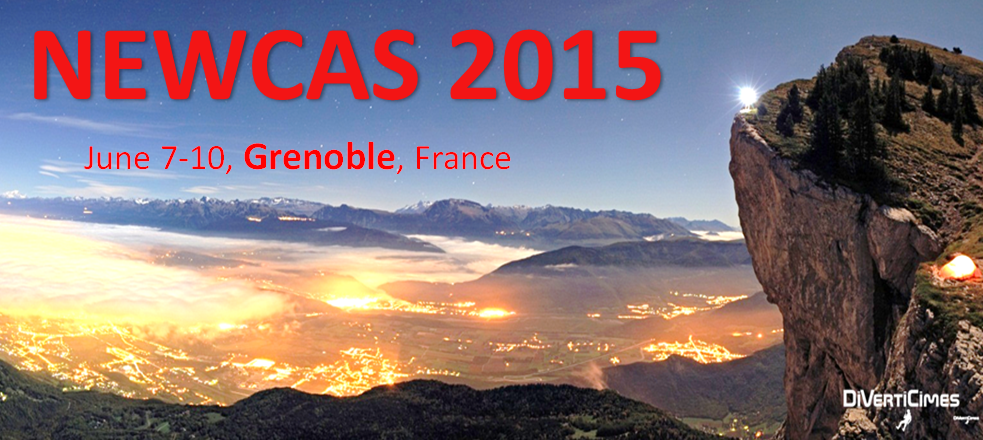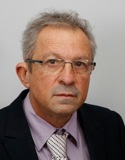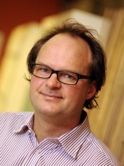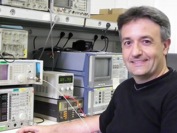
|
|
|
Keynotes
1. “The Internet of Things – The Ultimate ICT Revolution” Speaker: Joseph Sifakis (CRI Grenoble, Professor at EPFL) Abstract The Internet of Things (IoT) is a vision born from the convergence between embedded and networking technologies. It refers to the interconnection of uniquely identifiable embedded computing devices within the existing Internet infrastructure. Things can refer to a wide variety of devices such as heart monitoring implants, biochip transponders, automobiles with built-in sensors, field operation devices, smart thermostat and home appliances. They are equipped with sensors, actuators and microcontrollers which can provide the “real-time” embedded processing that is a key requirement of most IoT applications. The collected data are made available through a unified networking infrastructure, to users and interconnected machines. Furthermore, they can be processed and analyzed by the cloud for decision-making in order to respond to changes quickly and accurately, to predict events and optimize resources. We shortly discuss the IoT vision and its feasibility. We show that its achievement challenges our capacity to design mixed hardware-software systems that are trustworthy and optimal. We advocate the need for rigorous system design techniques. We present the current state of the art and discuss three major scientific problems: 1) linking physicality and computation; 2) component-based systems engineering; 3) intelligence in particular as the ability of system adaptation in order to meet given requirements in the presence of uncertainty. Achieving the IoT vision will have a tremendous societal, technological and scientific impact. In particular, it will reinvigorate Computing and enrich the discipline with new scientific foundations. Speaker Biography Joseph Sifakis is Emeritus Senior Researcher at CNRS, full professor at Ecole Polytechnique Fédérale de Lausanne (EPFL) and the director of “Centre de la Recherche Intégrative” (CRI) in Grenoble. His current research interests cover fundamental and applied aspects of embedded systems design. The main focus of his work is on the formalization of system design as a process leading from given requirements to trustworthy, optimized and correct-by-construction implementations. Joseph Sifakis is the founder of the Verimag laboratory in Grenoble, which he directed for 13 years. Verimag is a leading research laboratory in the area of embedded systems, internationally known for the development of the Lustre synchronous language used by the SCADE tool for the design of safety-critical avionics and space applications. In 2007, Joseph Sifakis has received the Turing Award for his contribution to the theory and application of model checking, the most widely used system verification technique today. Joseph Sifakis is a member of the French Academy of Sciences, a member of the French National Academy of Engineering and a member of Academia Europea. He is a Grand Officer of the French National Order of Merit, a Commander of the French Legion of Honor. He has received the Leonardo da Vinci Medal in 2012.
2. “Circuit Techniques for next Generation Wireless Communication” Speaker: Bram Nauta (University of Twente, The Netherlands) Abstract Due to the increase of wireless standards using different RF frequencies there is a need to have transceivers that can handle a wide range of RF frequencies. By abandoning the classical narrowband approach, new receiver architectures are explored in which noise and interferer robustness problems have to be solved. At the same time new features are wanted such as spectrum sensing for cognitive radio and self-interference cancelling for future full duplex communication. In this presentation several circuit and system techniques will be illustrated that may enable future radio systems. Speaker Biography
Bram Nauta was born in 1964 in Hengelo, The Netherlands. In 1987 he received the M.Sc degree (cum laude) in electrical engineering from the University of Twente, Enschede, The Netherlands. In 1991 he received the Ph.D. degree from the same university on the subject of analog CMOS filters for very high frequencies. In 1991 he joined the Mixed-Signal Circuits and Systems Department of Philips Research, Eindhoven the Netherlands. In 1998 he returned to the University of Twente, as full professor heading the IC Design group. His current research interest is high-speed analog CMOS circuits, software defined radio, cognitive radio and beamforming. He served as the Editor-in-Chief (2007-2010) of the IEEE Journal of Solid-State Circuits (JSSC), and was the 2013 program chair of the International Solid State Circuits Conference (ISSCC). Also he served as Associate Editor of IEEE Transactions on Circuits and Systems II (1997-1999), and of JSSC (2001-2006). He was in the Technical Program Committee of the Symposium on VLSI circuits (2009-2013) and is in the steering committee and programme committee of the European Solid State Circuit Conference (ESSCIRC). Moreover he is member of the ISSCC Executive committee. He served as distinguished lecturer of the IEEE, is elected member of IEEE-SSCS AdCom and is IEEE fellow. He is co-recipient of the ISSCC 2002 and 2009 "Van Vessem Outstanding Paper Award" and in 2014 he received the ‘Simon Stevin Meester’ award (500.000€), the largest Dutch national prize for achievements in technical sciences. In the same year he has been appointed as distinguished professor at the University of Twente.
3. “The technical challenges of future IoT networks and their consequences on modem’s and SoC’s design” Speaker: Christophe Fourtet (SigFox, France) Abstract IoT or « Internet of Things », recognized as the future massive extension of "M2M", will become one of the major markets of the following years and is going to bring incredible revolutions in industrial, and generally speaking, human activities, like energy, resource management, necessary replacement of programmed obsolescence by predictive maintenance or "on demand improvements" of machines, health care improvements, optimized agriculture...etc... For those revolutions to come true, beyond necessity of other ongoing breakthrough on materials, nano-tech, or sensors, the IoT telecom revolution itself needs to be a reality. This is the big challenge. Because an unprecedented density of devices, at very low cost, with outstanding needs for autonomy, that humanity will have to "forget" along their service after "dissemination" on the field, will require a complete "flip-over" of the philosophy that has been dominating in the telecom industry for 100 years, with a culminating point in modern radiotelephony and internet. Networks are today massively forcing their "administrated" modems to be highly disciplined (in frequency or modulation accuracy, time synchronization...) before they can negotiate a single bit of data. For a working IoT world, networks will need to be switched to "highly cognitive", with a high capacity to dynamically adapt to the various behavior of the disseminated devices they will have to "serve", through massively parallel Software Defined principles. "Networks at the service of free devices" : A true historic revolution in telecoms in fact ! Those philosophy changes will have unprecedented consequences on the modem's properties that will be embedded in those famous "objects", and thus will have consequences on hardware as well as software components from which they will be built. By cascade effect, consequences on SoC definition and design, will not be of minor importance… Speaker Biography
Graduated from INSA de Lyon and holds a DEA in electromagnetism, Christophe Fourtet is a long time enthusiast of science and technology, particularly radio and electromagnetism. This passion will take him to work on multiple radio projects in companies such as Thomson, TALCO, SAGEM, MOTOROLA, as a design engineer and as a technical manager. He has been working on topics such as PMR, then pioneering digital PMR as well as digital cellular, and then 3G / LTE. In fact, caught in the 90s as many radio specialists by the wave of cellular and its quest of broadband, he made a 180 degree turn starting to work on more "frugal" and "low footprint" radio systems, combining low power and high performance for a given service. The modern UNB (Ultra Narrow Band) began to be born, and it is his meeting with Ludovic Le Moan, that triggered the spark of SIGFOX five years ago. |




